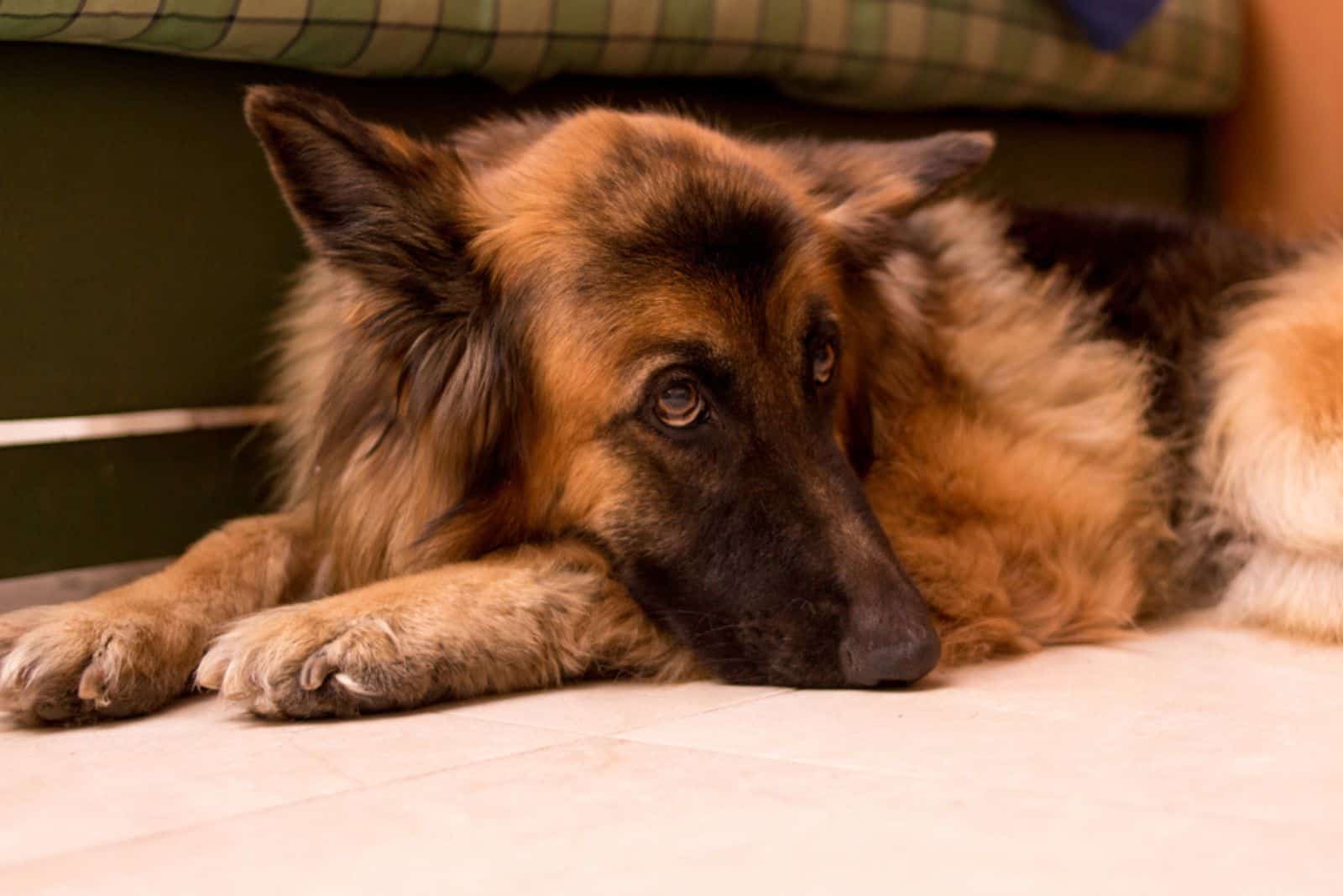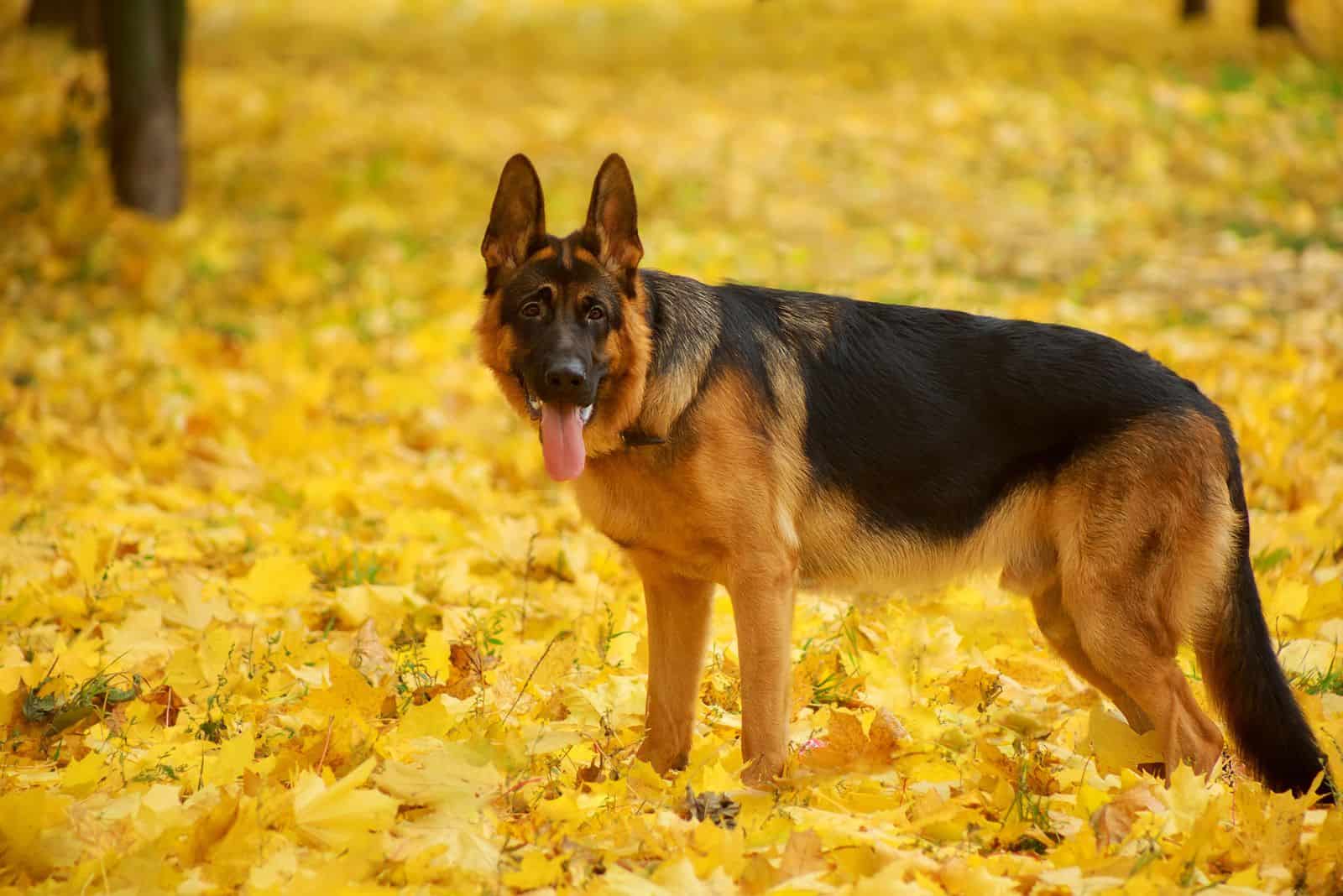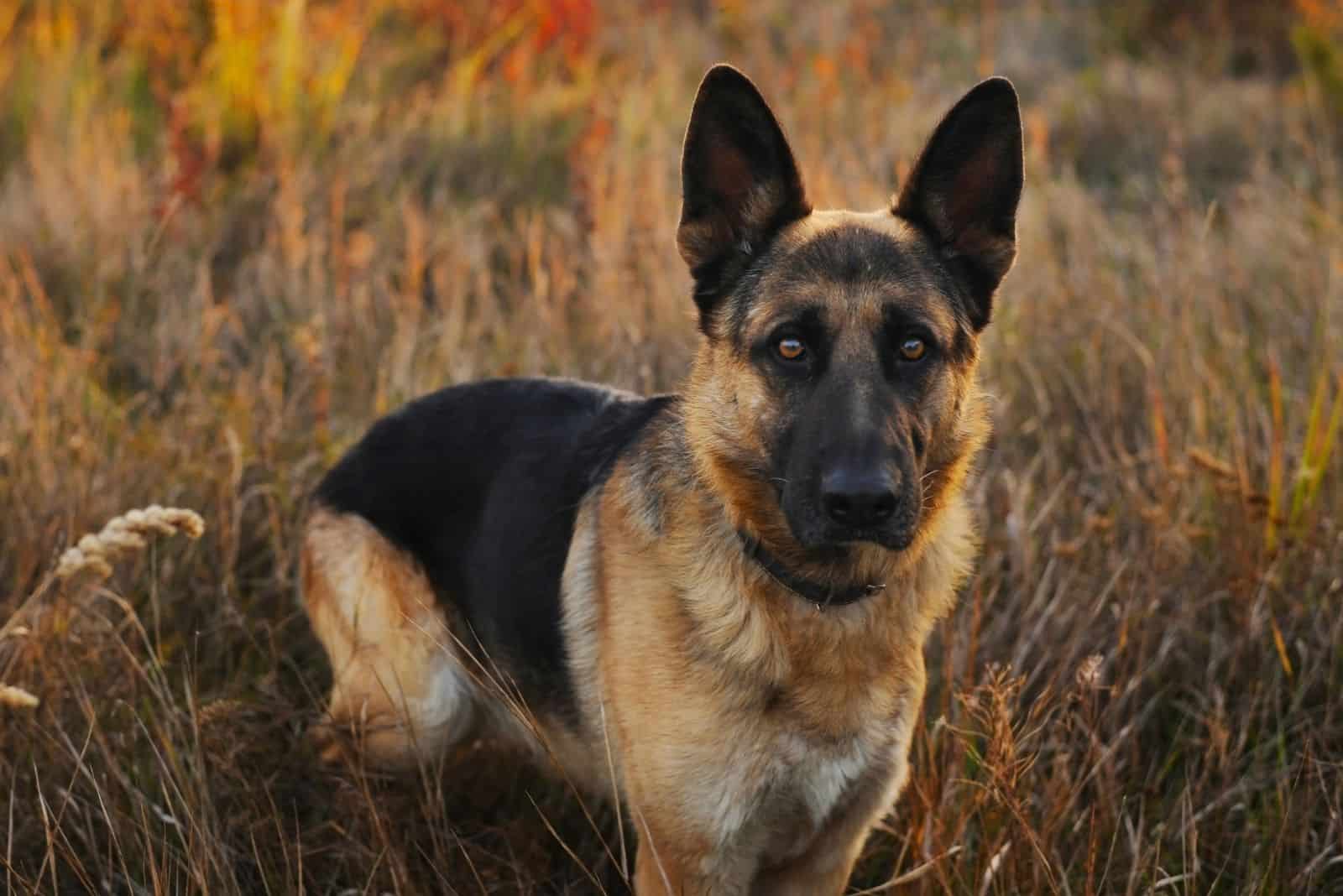With many dog breeds suffering from genetic diseases due to inbreeding and unethical breeding in general, the German shepherd is particularly prone to degenerative myelopathy.
As a serious condition that significantly reduces the quality of life of a dog, recognizing German shepherd degenerative myelopathy symptoms can make all the difference in prolonging its lifespan.
Today’s topic will hopefully give you crucial information that could help you take action sooner rather than later, giving your GSD another few months of living with its favorite human.
The Progression Of Degenerative Myelopathy Symptoms Is Bad News

German shepherd dogs are a high risk group for degenerative myelopathy. Their genetic make-up makes them more susceptible to this debilitating and fatal disease.
It develops predominantly in older dogs, but the presence of the gene mutation that causes DM can be determined with a simple genetic test. Breeders usually perform these tests to confirm their breeding stock will produce healthy German shepherd puppies.
The nature of degenerative myelopathy is progressive. This means that your GSD will gradually get worse. Unfortunately, it also signifies that there is no way to reverse the damage done to your dog’s body.
Conditions that affect the spinal cord typically include symptoms that are exhibited within the motor system. That implies a reduction in functionality of limbs, or in this case the legs.
Additionally, the early symptoms of DM can be misdiagnosed due to their similarity with hip dysplasia-mediated arthritis. However, more extensive testing can reveal what condition is behind the clinical signs.
To help out dog owners with differentiating between dysplasia and DM symptoms, we put together a list of 11 symptoms of hip dysplasia in German shepherds.
If we were to compare it to a human equivalent, it would be most similar to amyotrophic lateral sclerosis (ALS or Lou Gehrig’s disease). All the symptoms of DM come as a result of white matter degeneration in the spinal cord, so let us see all the symptoms as they appear.
1. Pain And Discomfort While Moving Or Changing Position
Every individual dog has different pain thresholds. German shepherds are one of those breeds that will push through anything to complete a task, whether set by their owner or themselves.
While you cannot see the pain, you can certainly notice its presence. Soft whimpering while moving or standing up from a lying position could be a symptom of early stage DM. If you are not aware of any physical injury to your dog’s hind legs, it would be wise to visit the vet.
German shepherds are usually quick on their feet and very agile. If you notice it lying most of the time, it could mean getting up or moving around causes discomfort. Displaying reluctance to play or exercise is equally telling that something serious is happening.
2. Loss Of Balance In Hind Legs

The progression of the disease starts in the spine and moves downward. As the hind limbs (typically starts with ataxia in one back leg) nerve damage lead to a loss of sensation, your GSD will seem to fall down from a standing position very easily.
This happens due to the hip joint nerves not being able to provide resistance to the applied force. Veterinarians often use a very rudimentary test to establish the presence of degenerative myelopathy that consists of gently pushing the dog’s hips.
Management of side force resistance in general is a prevalent clinical sign in German shepherds with DM. If you suspect your dog is in pain or discomfort, have the vet do a full examination and lab test for the condition.
3. Feet Dragging
Moving slowly or with an irregular gait is easily noticeable. German shepherds are a highly active breed, so you should have no trouble noticing a reluctance to exercise or play. This is a symptom many conditions have in common, but it does warrant a visit to the vet.
Still, a hairless topside of your German shepherd’s back feet indicates it has been dragging its feet. At this point, the degenerative myelopathy has progressed from pain and discomfort to loss of sensation in the hind legs.
There are a couple of factors that make the loss of sensation dangerous. One of them is the destabilization of the joint and the second one is increased risk of injury. Infections resulting from scraped hair and skin can be a real problem for a dog with DM.
4. Paw Knuckling

Although this German shepherd Degenerative Myelopathy symptom is connected with feet dragging, paw knuckling means that the musculoskeletal functionality of the joint and adjacent structures has been severely compromised.
It will greatly impact your GSD, and you will most likely notice it when the dog is turning. Lifting the leg from the hip without straightening the foot will make walking hard, leading to internal bone, cartilage, tendon, and ligament damage.
German shepherds that have this symptom will walk on the paw that is turned under. Physical activity will be minimal, if any, at this point. For this reason, it is crucial to take your dog to the DVM as soon as you notice the first pair of symptoms.
5. Inability To Stand Up, Move, Urinate, And Defecate Autonomously
While ataxia is a condition that describes poor muscle control due to nerve damage, complete loss of sensation is essentially paralysis. A German shepherd that cannot move any of its limbs has full limb paralysis.
As a progressive condition, degenerative myelopathy will see the dog lose sensation from the spine, to one of the hind hips and progress towards the feet. Late-stage symptoms most often carry loss of sensation in the front limbs too.
The dog even loses control of some internal organs, such as the bladder and bowel. Urinary incontinence is a major problem for dogs that have late-stage DM because of a high chance of bladder or urinary tract infections.
Uncontrolled defecation and urination also carry health risks associated with bacteria that normally reside in those body systems, so cleaning thoroughly is important. These symptoms in a milder form can also be signs that your GSD is getting old.
Helping Your German Shepherd Live With DM And Prognosis
The prognosis for GSDs with DM is usually heartbreaking, but some steps can be taken to slow down the progression of the disease. Secondary care is the most a dog owner can do in this case.
For paw knuckling, you will have to regularly check for injuries and provide cushion for the joint. The turning of the foot cannot be reversed, so making movement slightly more comfortable is key in preventing further damage.
You will probably need to adapt the environment where the German shepherd lives. A comfier bed, non-slip floors, ease of access for getting on the couch, etc., are some of the most essential things to do.
Ultimately, your GSD will be fully paralyzed, but euthanasia is recommended prior to that state. The quality of life becomes too low for a decent life, so six to twelve months after diagnosis is the time when veterinarians recommend you euthanize it.
The point at which you make the decision to euthanize your GSD can be difficult to reach, so we wrote an article that will help you realize when the right time for goodbye is.
There is no cure for DM, but a systematic approach to some variants of treatment can slow down the progression. It includes a specific diet consisting of unprocessed foods, structured physical activity, and supplements.
Causes Of Degenerative Myelopathy In German Shepherds

Research confirms that the reasons for the development of this condition are still unknown, and its presence is commonly attributed to a genetic mutation on the superoxide dismutase 1 (SOD1) gene.
The purpose of this gene is to regulate production of an enzyme that breaks down toxic cells called superoxide radicals. With a detoxification role, it is crucial for the health and longevity of white matter in the spine.
Degenerative myelopathy, in practice, is a disease characterized by the inhibition of this enzyme, leading to death of glial cells and myelinated axons. These two structural units serve as nerve insulation and protection, so the loss of sensation is due to a lack of shielding.
Senior dogs between the ages of four and fourteen years are most at risk from developing symptoms of DM. Luckily, both GSD puppy parents have to carry the SOD1 gene mutation for it to become active in the puppy.
A single parent carrying this genetic anomaly will only pass it on to their offspring, but it will not affect the puppies’ health. However, if two different litters that inherited only one copy of the mutated gene are bred, the resulting litters will suffer from DM.
Based on this genetic rule, ethical and reputable breeders test their sires and dames prior to mating to avoid the continuation of a bloodline with congenital conditions. This article on buying GSDs in pet shops perfectly showcases the dangers it poses in terms of genetic lottery.
There is also strong evidence of tumor and injury mediated degenerative myelopathy, which has the same symptoms with an external factor as the cause. In these cases, it is sometimes possible to repair the damage, but more often than not the prognosis remains the same.
Having all the information on cancer symptoms in German shepherds is prudent. It might save your dog’s life or increase the quality of life in case of tumors that cause DM.
Summary
With this in mind, German shepherd degenerative myelopathy symptoms are not clear-cut. If you are worried about any of the clinical signs mentioned in this article, do not wait for them to resolve on their own.
Visiting a veterinarian as a precautionary measure can give your GSD an extra few months or even up to a year to enjoy life. Make sure your DVM explains the entire process of treatment if it is available in your region.
To help you cheer up a bit, have a look at some of our favorite German shepherd memes on the internet. A smile at the end of such a topic can be beneficial.
